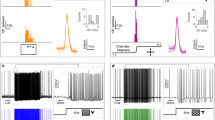Abstract
Insect navigational behaviors including obstacle avoidance, grazing landings, and visual odometry are dependent on the ability to estimate flight speed based only on visual cues. In honeybees, this visual estimate of speed is largely independent of both the direction of motion and the spatial frequency content of the image. Electrophysiological recordings from the motion-sensitive cells believed to underlie these behaviors have long supported spatio-temporally tuned correlation-type models of visual motion detection whose speed tuning changes as the spatial frequency of a stimulus is varied. The result is an apparent conflict between behavioral experiments and the electrophysiological and modeling data. In this article, we demonstrate that conventional correlation-type models are sufficient to reproduce some of the speed-dependent behaviors observed in honeybees when square wave gratings are used, contrary to the theoretical predictions. However, these models fail to match the behavioral observations for sinusoidal stimuli. Instead, we show that non-directional motion detectors, which underlie the correlation-based computation of directional motion, can be used to mimic these same behaviors even when narrowband gratings are used. The existence of such non-directional motion detectors is supported both anatomically and electrophysiologically, and they have been hypothesized to be critical in the Dipteran elementary motion detector (EMD) circuit.
Similar content being viewed by others
References
Beersma D, Stavenga D, Kuiper JW (1977) Retinal lattice, visual field and binocularities in flies. J Comp Physiol A 119: 207–220
Borst A, Egelhaaf M (1989) Principles of visual motion detection. Trends Neurosci 12(8): 297–306
Dacke M, Srinivasan M (2007) Honeybee navigation: distance estimation in the third dimension. J Exp Biol 210(5): 845–853
Douglass J, Strausfeld N (1995) Visual motion detection circuits in flies: peripheral motion computation by identified small-field retinotopic neurons. J Neurosci 15(8): 5596–5611
Dror R, O’Carroll D, Laughlin S (2001) Accuracy of velocity estimation by Reichardt correlators. J Opt Soc Am A 18(2): 241–252
Dyhr JP, Higgins CM (2010) The spatial frequency tuning of optic-flow-dependent behaviors in the bumblebee Bombus impatiens. J Exp Biol 213: 1643–1650
Esch H, Zhang S, Srinivasan M, Tautz J (2001) Honeybee dances communicate distances measured by optic flow. Nature 411(6837): 581–583
Hassenstein B, Reichardt W (1956) Systemtheoretische Analyse der Zeit-, Reihenfolgen- und Vorzeichenauswertung bei der Bewe- gungsperzeption des Rüsselkäfers Chlorophanus. Z Nat B 11(9): 513–524
Higgins C (2004) Non-directional motion may underlie insect behavioral dependence on image speed. Biol Cybern 91(5): 326–332
Higgins C, Douglass J, Strausfeld N (2004) The computational basis of an identified neuronal circuit for elementary motion detection in dipterous insects. Vis Neurosci 21(04): 567–586
Juusola M, Weckstrom M, Uusitalo R, Korenberg M, French A (1995) Nonlinear models of the first synapse in the light-adapted fly retina. J Neurophysiol 74(6): 2538–2547
Kirchner W, Srinivasan M (1989) Freely flying honeybees use image motion to estimate object distance. Naturwissenschaften 76(6): 281–282
Riabinina O, Philippides A (2009) A model of visual detection of angular speed for bees. J Theor Biol 257(1): 61–72
Rivera-Alvidrez Z (2005) Computational modeling of neurons involved in fly motion detection. Master’s thesis, University of Arizona, Tucson, Arizona
Seidl R, Kaiser W (1981) Visual field size, binocular domain and the ommatidial array of the compound eyes in worker honey bees. J Comp Physiol A 143(1): 17–26
Serres J, Masson G, Ruffier F, Franceschini N (2008) A bee in the corridor: centering and wall-following. Naturwissenschaften 95(12): 1181–1187
Si A, Srinivasan M, Zhang S (2003) Honeybee navigation: properties of the visually driven ‘odometer’. J Exp Biol 206(8): 1265–1273
Srinivasan M, Zhang S (2004) Visual motor computations in insects. Annu Rev Neurosci 27: 679–696
Srinivasan M, Lehrer M, Kirchner W, Zhang S (1991) Range perception through apparent image speed in freely flying honeybees. Vis Neurosci 6(5): 519–535
Srinivasan M, Zhang S, Chandrashekara K (1993) Evidence for two distinct movement-detecting mechanisms in insect vision. Naturwissenschaften 80: 38–41
Srinivasan M, Zhang S, Lehrer M, Collett T (1996) Honeybee navigation en route to the goal: visual flight control and odometry. J Exp Biol 199(1): 237–244
Srinivasan M, Poteser M, Kral K (1999) Motion detection in insect orientation and navigation. Vis Res 39(16): 2749–2766
van Hateren J, Schilstra C (1999) Blowfly flight and optic flow. II. head movements during flight. J Exp Biol 202(11): 1491–1500
van Santen J, Sperling G (1985) Elaborated Reichardt detectors. J Opt Soc Am A 2(2): 300–320
von Frisch K (1993) The dance language and orientation of bees. Harvard Univesity Press, Cambridge
Author information
Authors and Affiliations
Corresponding author
Rights and permissions
About this article
Cite this article
Dyhr, J.P., Higgins, C.M. Non-directional motion detectors can be used to mimic optic flow dependent behaviors. Biol Cybern 103, 433–446 (2010). https://doi.org/10.1007/s00422-010-0414-6
Received:
Accepted:
Published:
Issue Date:
DOI: https://doi.org/10.1007/s00422-010-0414-6




